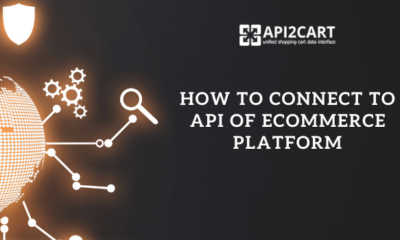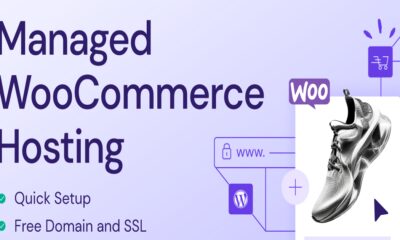It was an ambitious message to deliver. The last few years have left many of us feeling disconnected in our homes and work lives as well as increasingly intolerant of disconnected digital experiences, whether as consumers, as B2B buyers, or both.
But the first in-person Inbound conference since 2019 seemed the right forum to articulate it.
Bringing us back together
“Everything we do tries to be a reflection of the world and the customer,” said HubSpot CMO Kipp Bodnar. “We started by looking at ourselves and thinking how we were feeling – and man, it’s been really hard. But we weren’t the only ones feeling that. We saw Inbound as starting to bring us all back together and we wanted a message and an experience to reflect that.”
The twin message was almost too neat. Two kinds of disconnection — personal and technological — two solutions — building community and building a natively connected marketing, sales and service platform.
“Software is necessary but not sufficient,” explained Bodnar. “There are some problems software can’t solve that need to be solved for our customers and for the broader B2B go-to-market community — and those are problems that really need to be solved by communities and networks.” HubSpot’s community initiatives, including the new connect.com networking space, respond to a perceived need to build not so much a community of product but a community of practice; spaces where marketing, sales and other professionals can explore common challenges. “We have a great foundation,” said Bodnar. “The content, the HubSpot Academy; it’s not an overnight thing for us.”
Indeed, HubSpot’s content offerings have burgeoned, not least through last summer’s launch of the HubSpot Podcast Network. As we reported yesterday, the network is seeing some nine million monthly downloads. “That’s audio only,” said Bodnar. “Once you start taking those things to YouTube, that’s several more million.”
Read next: Why community could be the next big thing in marketing
The network effect
It’s early days for connect.com. It features several thousand early adopters who have created profiles designed to indicate their interests, skills and certifications. In some ways, it almost looks like a nascent LinkedIn. Is HubSpot going head-to-head with LinkedIn, at least within the parameters of marketing and marketing operations, sales and service?
Bodnar balked at that. “There are probably some overlapping use cases, right? I don’t think the two will be mutually exclusive, it’s not going to be an either/or situation. There are more focused use cases we think we can deliver from a community perspective that LinkedIn under-addresses today.”
There are, of course, many highly focused — not to say niche — use cases to be found in private Slack channels. Is connect.com looking for a sweet spot between Slack and LinkedIn? “I think that’s a really nice way to describe it,” Bodnar agreed. “The Slack channels are too decentralized. There’s great communication but there’s no network effect. To discover new things to learn, new people to learn from, people who can help you, people who you can hire for your business, you need the network component more than just the base community that exists in a private Slack channel.”
Get MarTech! Daily. Free. In your inbox.
The platform effect
HubSpot proselytizes not just for connected communities but for connected technology. After all, if technology is not sufficient, it is at least necessary. Perhaps uniquely among the big players in the marketing suite space, HubSpot has built its offering for the most part natively rather than through acquisition of existing third-party solutions. In HubSpot’s view, this is something that can increasingly be turned to their advantage.
“Data is hard, it’s messy,” said Nicholas Holland, general manager of Marketing Hub and VP of product, looking back to the decision to rebuild the early Marketing Hub offering on the then new CRM platform rather than leave them as two separate but integrated platforms. “We weren’t having system A talk to system B. Everything was on the singular, unified data layer.”
The opportunity Holland saw was to leverage CRM data, which is much richer than list data, directly in the marketing automation part of the solution. “Every piece of data should be available in reporting, every piece of data should be available in automation, every piece of data should be available in content.”
Competitors, Holland said, are in a different position. Marketo marketing automation needs to integrate with a separate CRM; the various separate Salesforce clouds need to synch together.
It’s this connected platform that it supporting the new Customer Journey Analytics tool announced at Inbound. “If you have the object data — contacts and companies — the event data — everything they’ve done across the journey — and you can string that together in a reporting framework, now you have everything you need [for attribution].”
While an individual customer journey can look fragmented and unpredictable, tracking a cohort of customers can deliver a clearer path. Having the common data layer, Holland argued, obviates the need for yet another product, like a CDP, to pull disparate data together.
As for attribution models, there are many out there, as well as plenty of disagreement about which are most insightful. “Because something is not perfect,” said Holland, “doesn’t make it not valuable.” Despite noise and complexity, he said, attribution models can be directionally accurate.
Read next: Why marketing automation is both a challenge and a necessity
Evolving concerns, evolving leadership
HubSpot registered some 50,000 audience members for Inbound 2022. That includes virtual attendees, of course. The in-person crowd seemed less of a crowd than usual — partly perhaps because some of the expo floor was turned over to small stages; audiences tended to appear when the stages were in use, then disappear to other parts of the enormous Boston Convention and Exhibition Center. Bodnar admitted that in-person attendance was somewhat down: “It’s slightly smaller, like 10-15% smaller than 2019.” In many ways that’s not surprising.
There have also been significant changes in leadership since 2019. Chief Customer Officer Yamini Rangan succeeded to the CEO slot last year, with co-founder Brian Halligan becoming Chairman. “Brian gets to still be Brian in the Chairman role but doesn’t have to do as much of the day-to-day admin stuff you have to do when you are the CEO of a business like this,” said Bodnar.
It’s interesting both for HubSpot users and users of other platforms and solutions to contemplate the deliberate evolution of the offering, especially over the last eight or so years as it has both added new capabilities to its original inbound marketing solution, and elevated its market focus to include the enterprise.
“We’ve always been clear about where we’re trying to go and we’re just evolving the next step of leadership to get us there,” Bodnar said.




















You must be logged in to post a comment Login